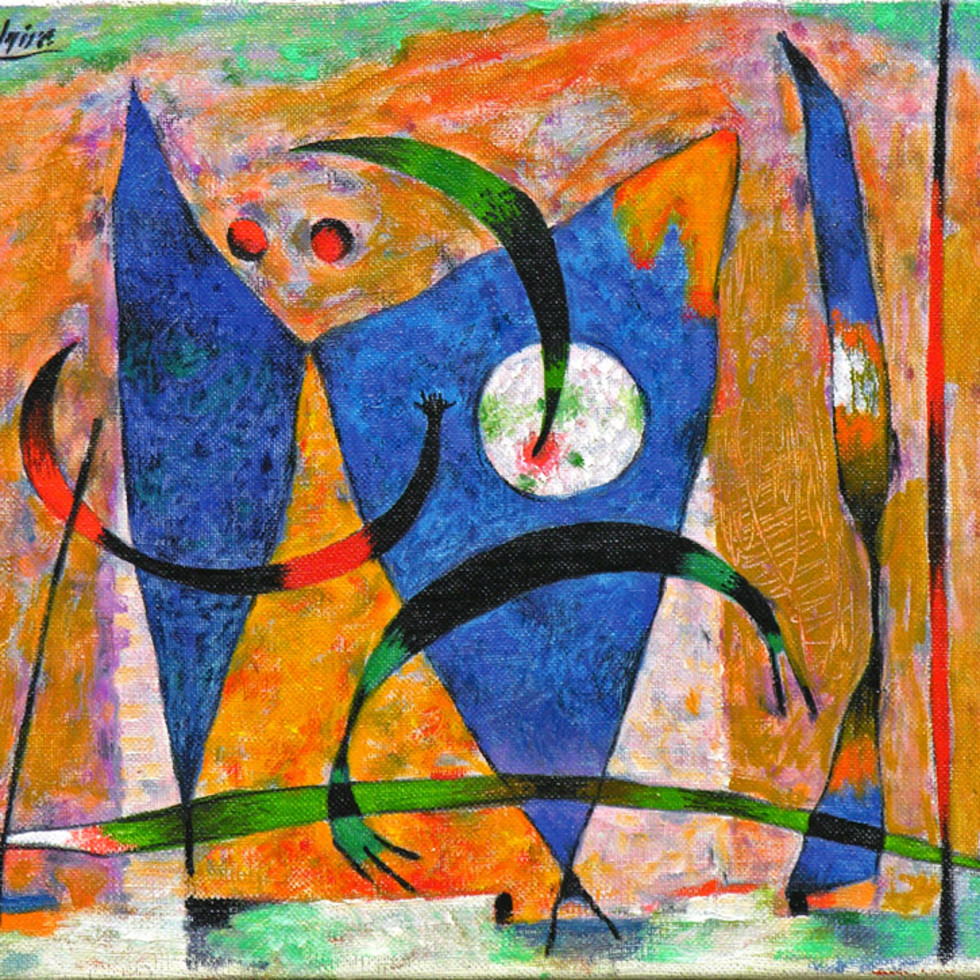Marcelle Ferron
 "[...] Her colour is exciting and her drive as powerful as the Canadian landscape, and landscape is just what these paintings convey to me, though the painter gives you no clue by way of titles [...] she is very much in control of her great sheets of scarlet, her drifts of white and surges of black, her violet lights and her shoots of living green [...]"
Robert Ayre, art critic for the Montreal Star, writing in 1965
"[...] Her colour is exciting and her drive as powerful as the Canadian landscape, and landscape is just what these paintings convey to me, though the painter gives you no clue by way of titles [...] she is very much in control of her great sheets of scarlet, her drifts of white and surges of black, her violet lights and her shoots of living green [...]"
Robert Ayre, art critic for the Montreal Star, writing in 1965
Marcelle Ferron was born in Louiseville, Quebec, in 1924 and died in Montreal in 2001. One of the most important twentieth century Quebec artists, she was known as a painter, sculptor and glass maker.
Marcelle Ferron registered at the École des beaux-arts de Québec (1942-1944) but quit her studies before completing them. In 1946, she met Paul-Émile Borduas and enrolled at the École du Meuble in Montreal where he taught. She was one of the last artists to officially join the group known as Les Automatistes. She was also one of the youngest signatories of the group's Refus global manifesto in 1948. She held her first solo exhibition in 1949 at Librairie Tranquille in Montreal. That year, she began to gain considerable recognition in the art world.
Towards 1953, Marcelle Ferron left her husband and moved to France with her three daughters. There she rented a house at Clamart, a suburb of Paris, and set up her studio. Europeans appreciated her abstract works, full of light and life. During her stay, she took classes in Paris under Michel Blum (1964), a glasswork artist. She participated in many group and solo exhibitions in galleries and was part of the art shows at the Salons d'Art Contemporains held the Musée d'Art Moderne in Paris. During this time, she also exhibited her work in Canada, the United States and much of Europe, specifically Germany, England, Italy and the Netherlands. She received a scholarship from the Canadian Council of Arts in 1957, a prize from the Montreal Museum of Fine-Arts in 1960 and in 1961, she represented Quebec at the Sao Paolo Biennale in Brazil and won a Silver Medal—the first time a Quebec woman had won this prize.
It was an internationally recognized artist who returned to Quebec in 1966. She devoted herself to working with glass for the next seven years. She created her first masterpiece in this medium, the windows at the Champs-de-Mars Metro Station in Montreal, being built for the 1967 World Fair, Montreal's Expo '67. She created many public works in this medium until 1973. In 1967, she began teaching at Université Laval in Quebec City. She taught Architecture from 1967 to 1970 and then Visual Arts from 1970 to 1979. During those years, she was elected a Member of the Royal Canadian Academy in 1972.
In 1973, she went back to painting full-time, and exhibited her works in galleries and museums in Montreal, Quebec, Ottawa, Toronto, Winnipeg, Paris and Mexico, either in solo or group exhibitions. The first Retrospective Exhibition of her work was held in 1976 at the Musée d'Art de Joliette in Quebec. The following year, she was awarded the Louis-Philippe Hébert Prize. In 1983, she was the first woman to receive the Prix Paul-Émile-Borduas, the highest honour conferred upon visual artists by the Quebec Government. Two years later she was made Chevalier of the Ordre National du Québec. In 2000, she was named Grand Officier of the Ordre National du Québec and a retrospective show was held at the Musée d'art Contemporain de Montréal. She died a year later in Montreal at the age of 77.







